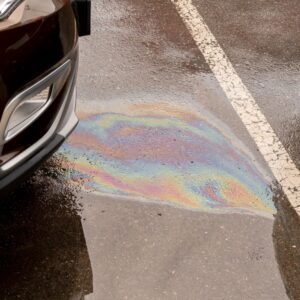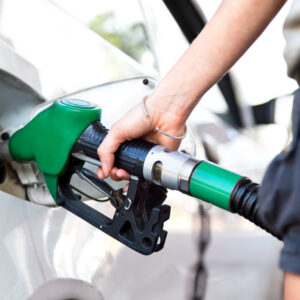Gasoline is the lifeblood of your vehicle. Without it, there can be no combustion in your engine. But if your vehicle’s been sitting unused for a while, the gas in its tank can go bad, and you’ll need to replace it before you go for another drive.
Disposing of Old Gas
As a hazardous waste, old gas needs to be disposed of through your area’s hazardous waste program. Many local communities have a collection system for hazardous waste, and you’ll need to research where and when they do pickups for disposal. Places you can leave your old gas include a household hazardous waste facility (HHW), a local recycling center, and a local fire department. Some auto repair shops and garages might also accept old gas. If there isn’t a hazardous waste collection site or a collection day in your community, you’ll need to hire a hazardous waste disposal company to do it for you.
Hazardous waste programs are generally free, but the container you need to use to transport your old gas can cost around $20 to $40. This is because these containers are government-certified to carry the toxic gas.
Never dispose of gas by pouring it down storm drains, into septic systems, or on the ground. Also, don’t throw it away with your regular garbage or recycling.
How To Tell Gas Is Old
When gasoline’s been sitting in a tank untouched for two months or more, it begins to oxidize and evaporate. It degrades because its chemical compounds evaporate at different rates, changing the gas’ overall composition. It loses its effectiveness, and eventually, if it’s contaminated, it can clog gas lines, filters, and the carburetors or fuel injectors.
When it’s old, the gas will smell stale or spoiled. If you pour it in a clear container and compare it to new gas, you’ll notice the old gas is darker.
Things You’ll Need To Dispose of Gasoline
To dispose of old gas, you’ll need to prepare some safety gear and some tools. For safety, you’ll need safety goggles to protect your eyes from the toxic liquid. Gloves and protective clothing like mechanic coveralls aren’t necessary, but they will help.
As for tools, you’ll need a siphon pump to get the gas moving. Gas is toxic, so never suck on the tube to try and generate a vacuum. If you’re using a siphon pump for the first time, make sure to let its tubes unfurl for a few days to avoid them rolling up while siphoning.
Next, you’ll need an authority-approved disposable gas can that’s made of either plastic or metal. Don’t reuse the container after disposing of the gas as the remnants of the old gas can contaminate new gas.
Finally, be sure to prepare cleaning materials like rags, towels, or paper towels. If you place a towel under the gas tank opening, it’ll catch any spilled gas and help protect your vehicle’s paint job.

How To Remove Gas from Your Vehicle
To remove old gas from your vehicle, follow these steps:
Positioning
Position your authority-approved gas disposal container so it sits level. If it’s slanted, it might tip over and some of the gas might pour out through the opening without you noticing. Put the siphon input tube into the gas tank, making sure it reaches the bottom of the tank. Place the output tube in the container.
Pumping
Pump the siphon and wait for the gas to flow from your vehicle’s tank to your disposal container. Remove the siphon and pump it a few more times over a rag or paper towel to get rid of any remaining gas in the siphon itself.
After that, simply close the caps on both the container and the tank and you should be all done.
At the end of the day, disposing of old gas can be a rather tedious process that requires you to do your research regarding toxic waste disposal and how to drain your fuel tank. However, it’s something you may have to do if your vehicle’s gas really has gone bad. At least now you know where to dispose of old gas and how to do it properly.
Where to Get the Right Container for Disposing Gas
As we’ve mentioned, you’ll need the right container to dispose of old gas properly. Keeping gas in a container that isn’t designed to hold toxic substances is dangerous, and many recycling centers won’t accept your gas if it isn’t in the right container. You’ll typically want to use a jerry can, which you can buy easily at CarParts.com.
CarParts.com lets you shop for the items you need to dispose of gas quickly and conveniently. Our easy-to-navigate website allows you to place your order in just a few clicks. Coupled with our convenient and secure checkout, we’ve made ordering from the comforts of home easy and safe. If you have any questions or concerns regarding our products, you can reach out to our friendly and helpful customer support team, who are here around the clock to assist you.
Don’t risk the dangers of transporting your old gas in the wrong way. Order a new jerry can and other tools at CarParts.com today.
Gasoline Transporting Tips to Make Disposal Easier
Transporting gas isn’t as easy as filling any old container and driving to the nearest disposal center. Here are some handy tips to help you store gas for transportation safely and effectively.
- Only fill gas containers on stable, steady ground.
- Only use containers made of heavy plastic marked with an Underwriters Laboratories (UL) or Factory Mutual (FM) symbol.
- Clean up any spills as soon as possible.
- When filling a gas container, don’t fill it to the brim. Give it space to allow the expansion of fumes.
- Never light a cigarette, smoke, or start any fires near a gas container.
Frequently Asked Questions
Here are some commonly asked questions about gas disposal.
Can old gas be recycled?
While it is possible for old gas to be recycled, it’s strongly recommended to dispose of old gas due to how difficult and dangerous it is to recycle it at home.
You’re better off bringing old gas to a disposal center. This way, professionals and experts can recycle your gas with all the proper equipment and training necessary to safely get the job done.
Can you use gas with water in it?
No, you can’t use gas with water in it. If you plan on disposing of gas that’s been contaminated, make sure to get rid of any contaminants first.
Fortunately, water is easy to remove because it settles at the bottom of a container. This occurs because water and gasoline do not mix. Once the gasoline has been separated completely, you can bring it to a disposal center to get rid of it.
How does old, contaminated gas affect engines?
Old gas, as well as contaminated gas, becomes less combustible. This makes the engine stall more often due to reduced engine torque.
Contaminants can also block the fuel filter and clog fuel injectors, leading to problems such as rough idling, surging, and poor performance.
Any information provided on this Website is for informational purposes only and is not intended to replace consultation with a professional mechanic. The accuracy and timeliness of the information may change from the time of publication.

















